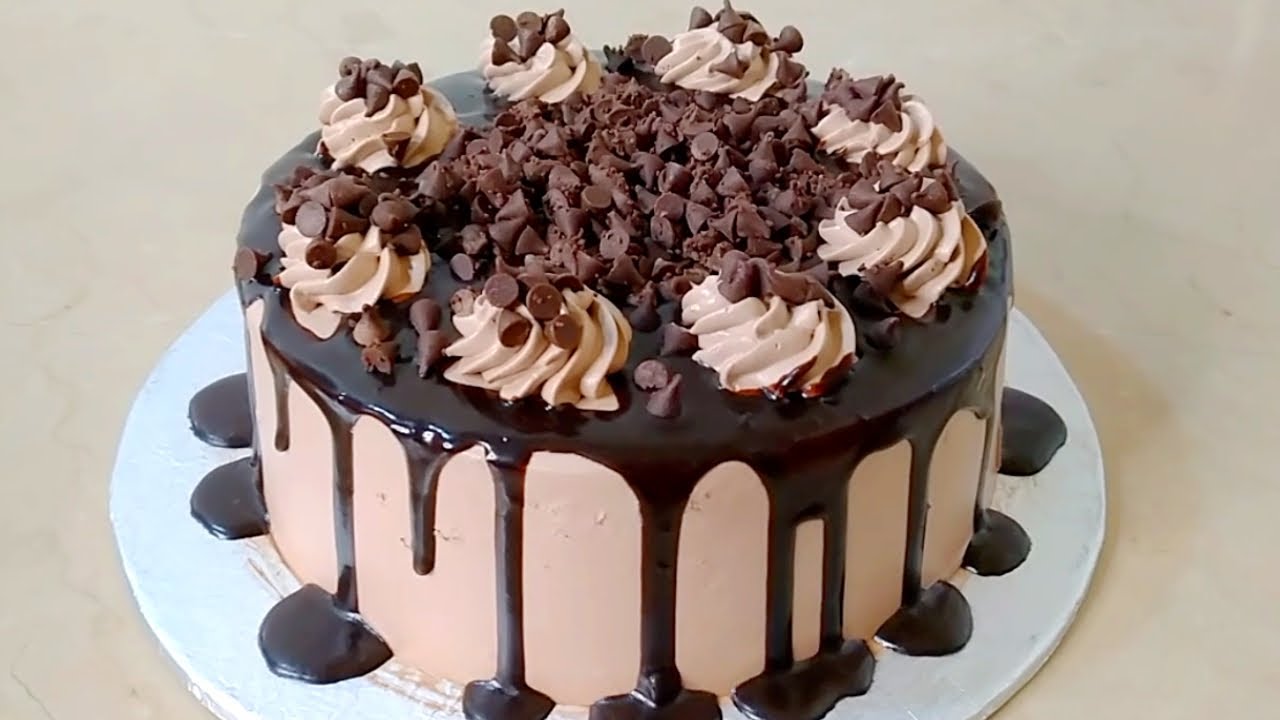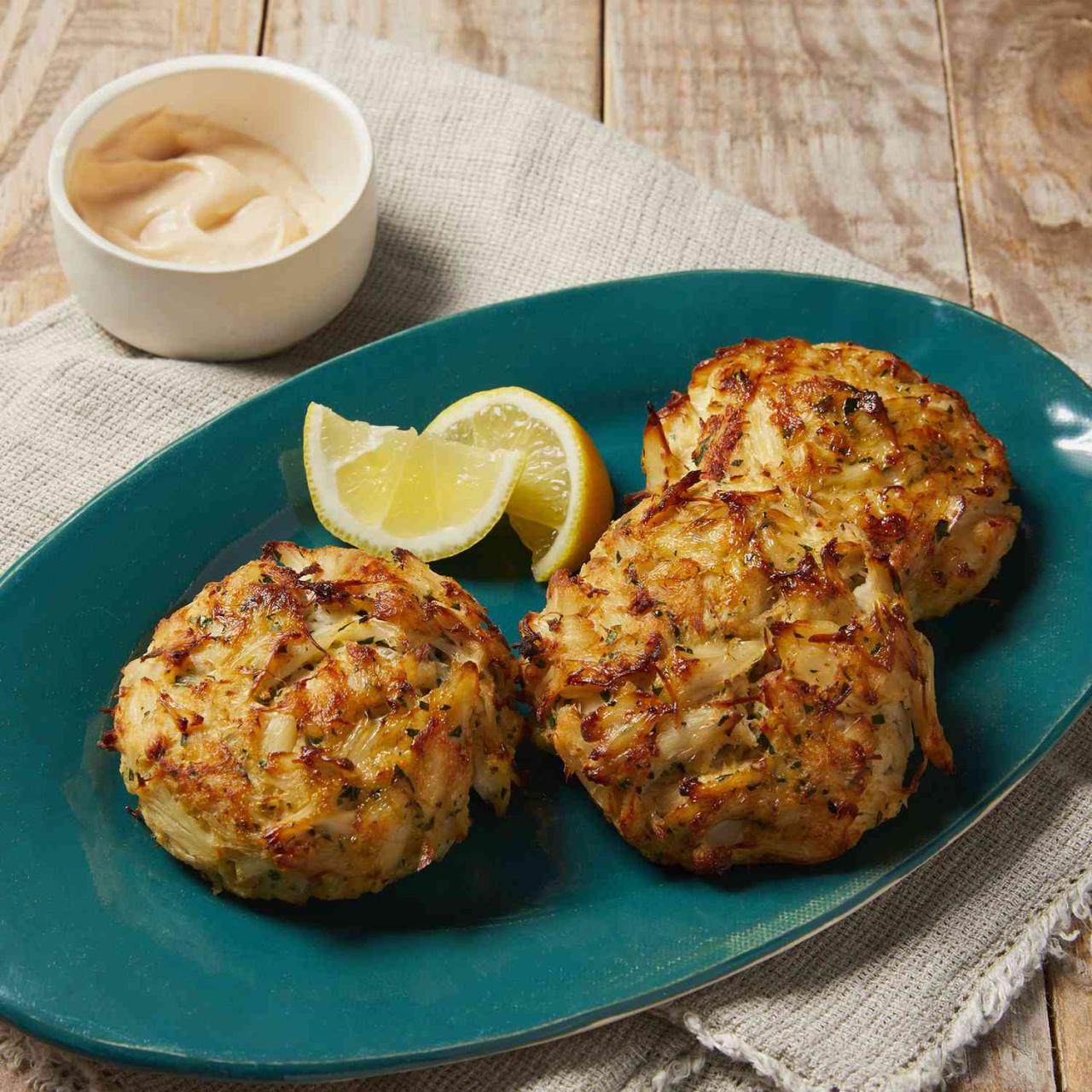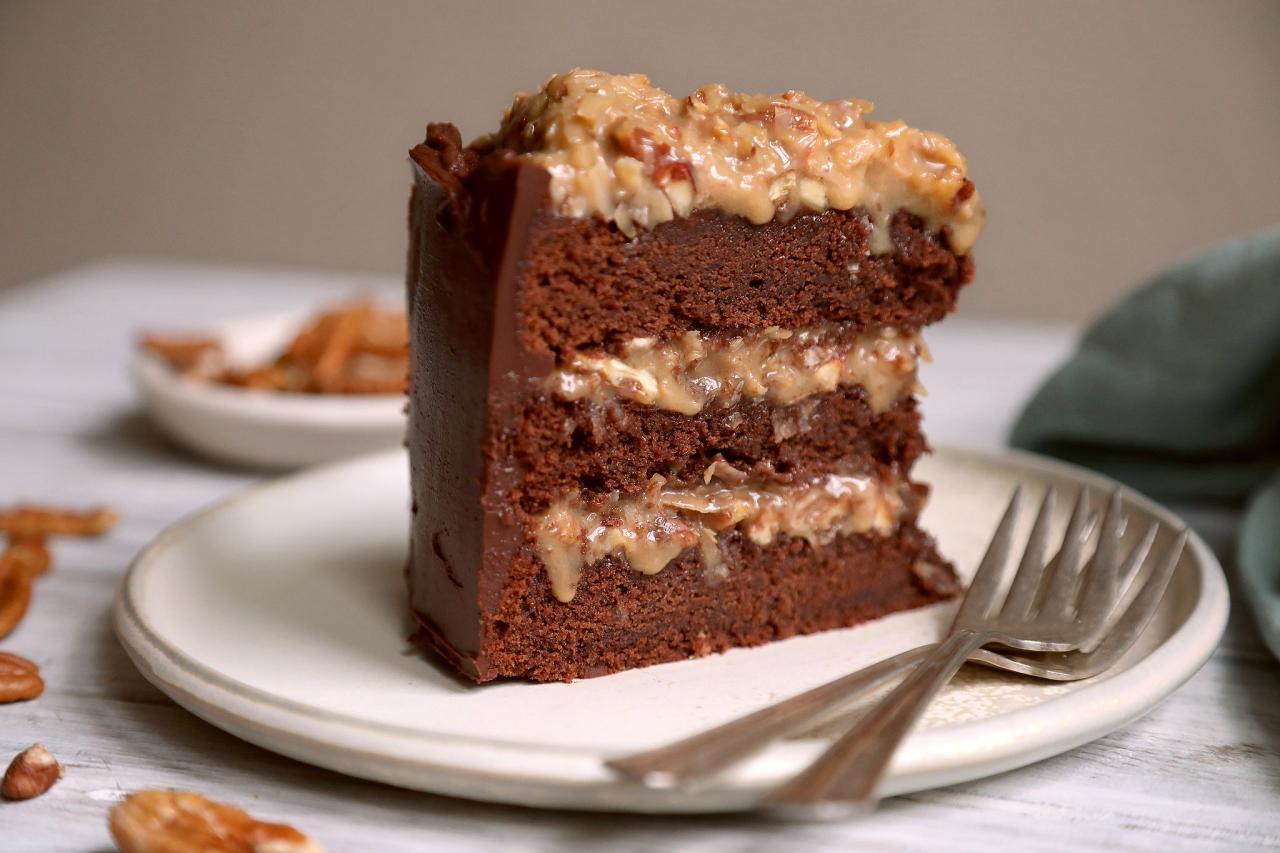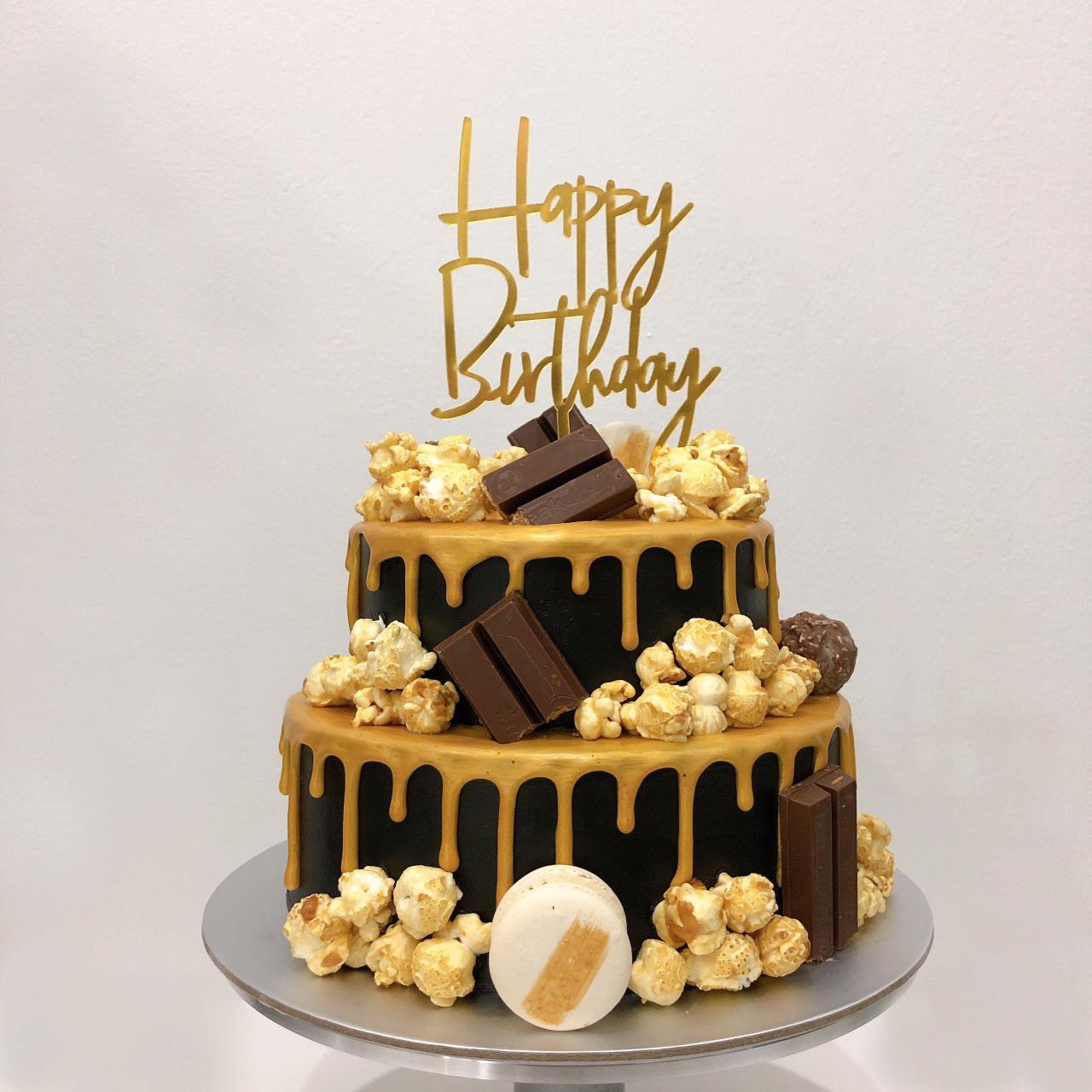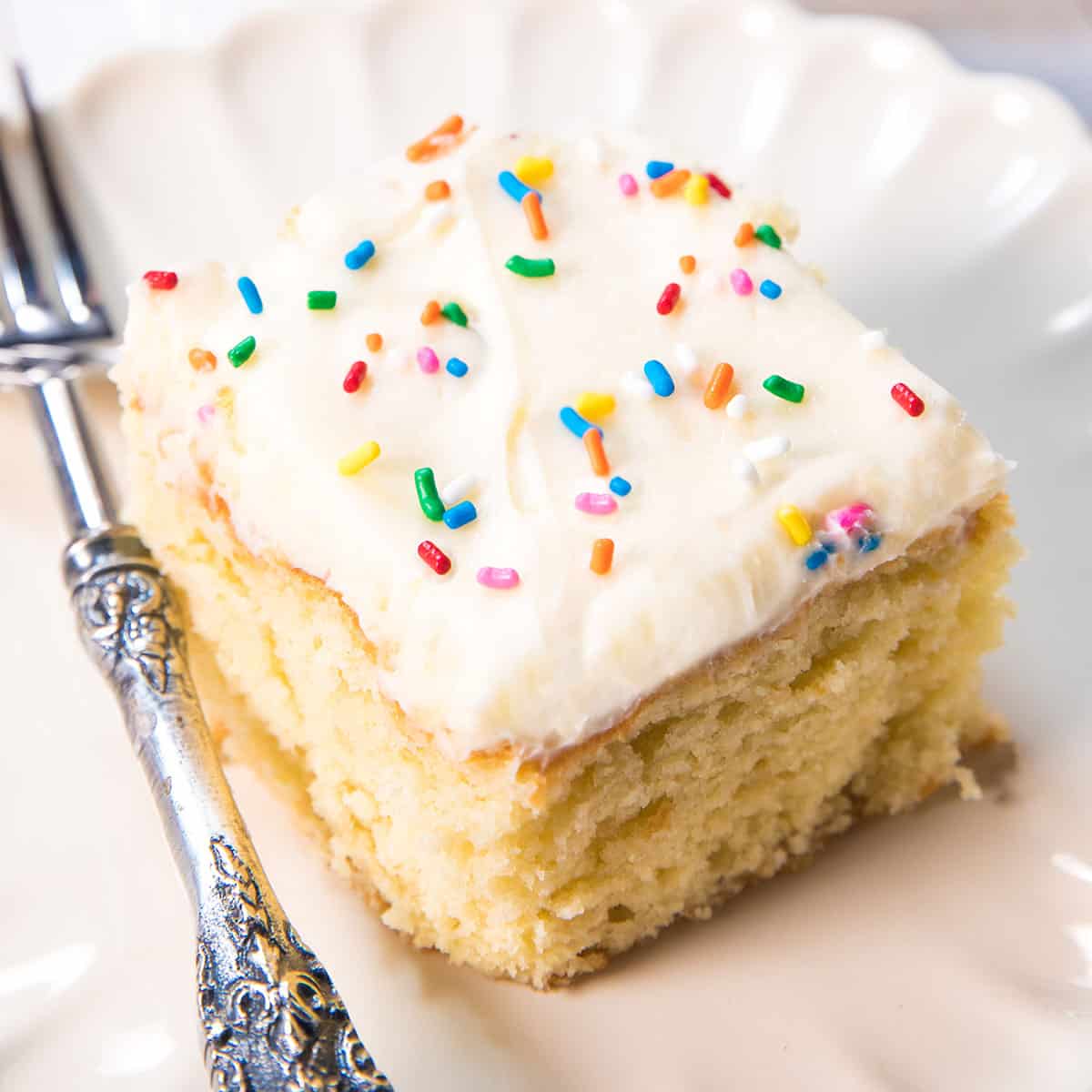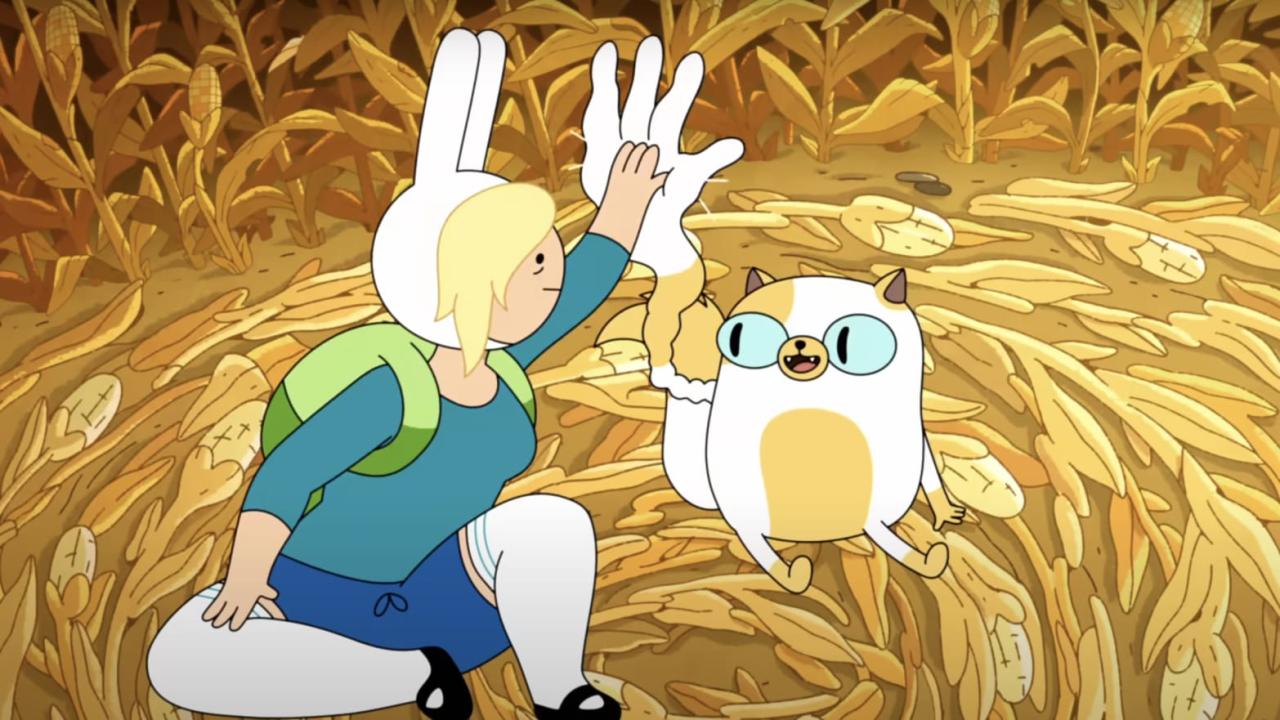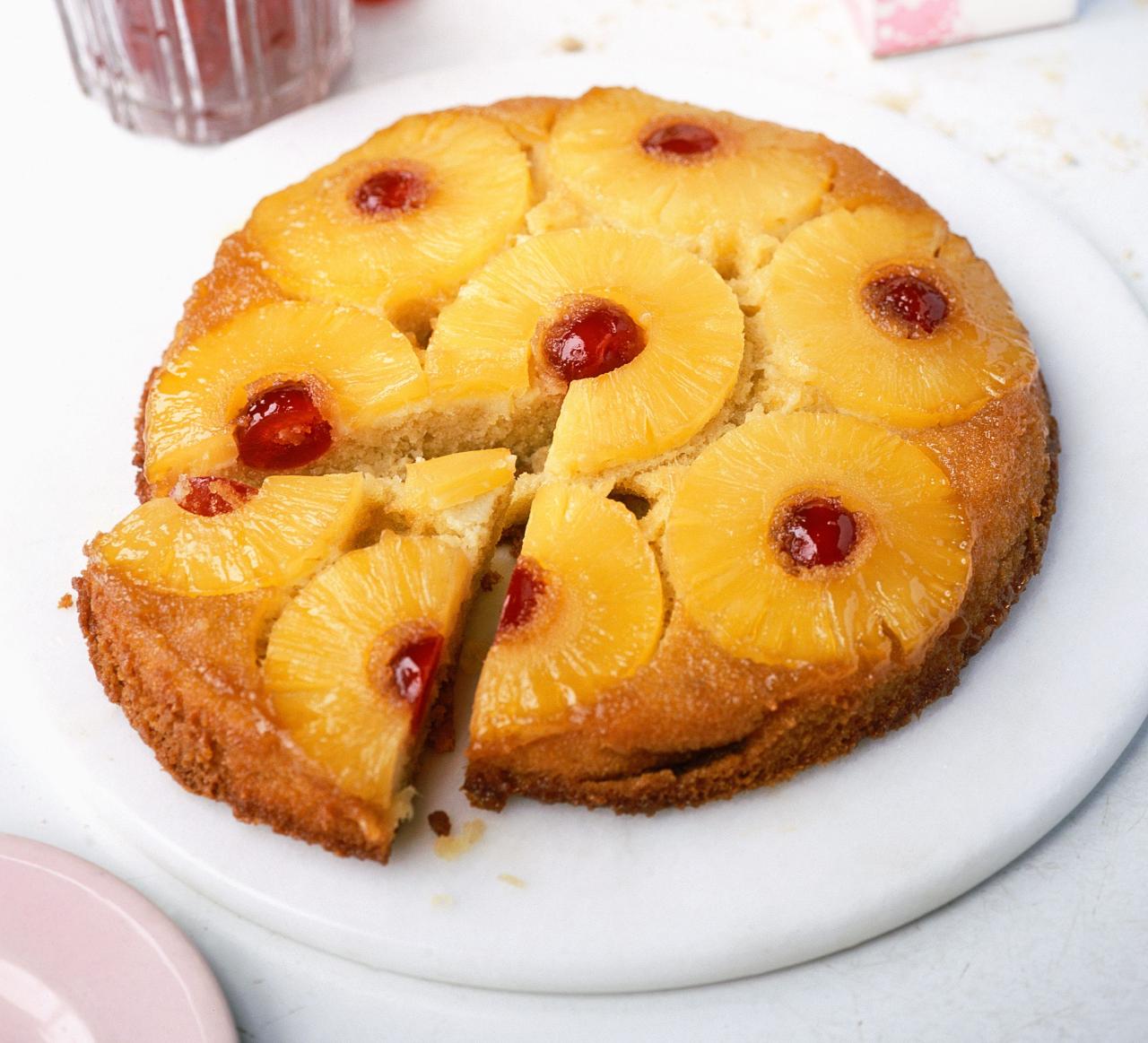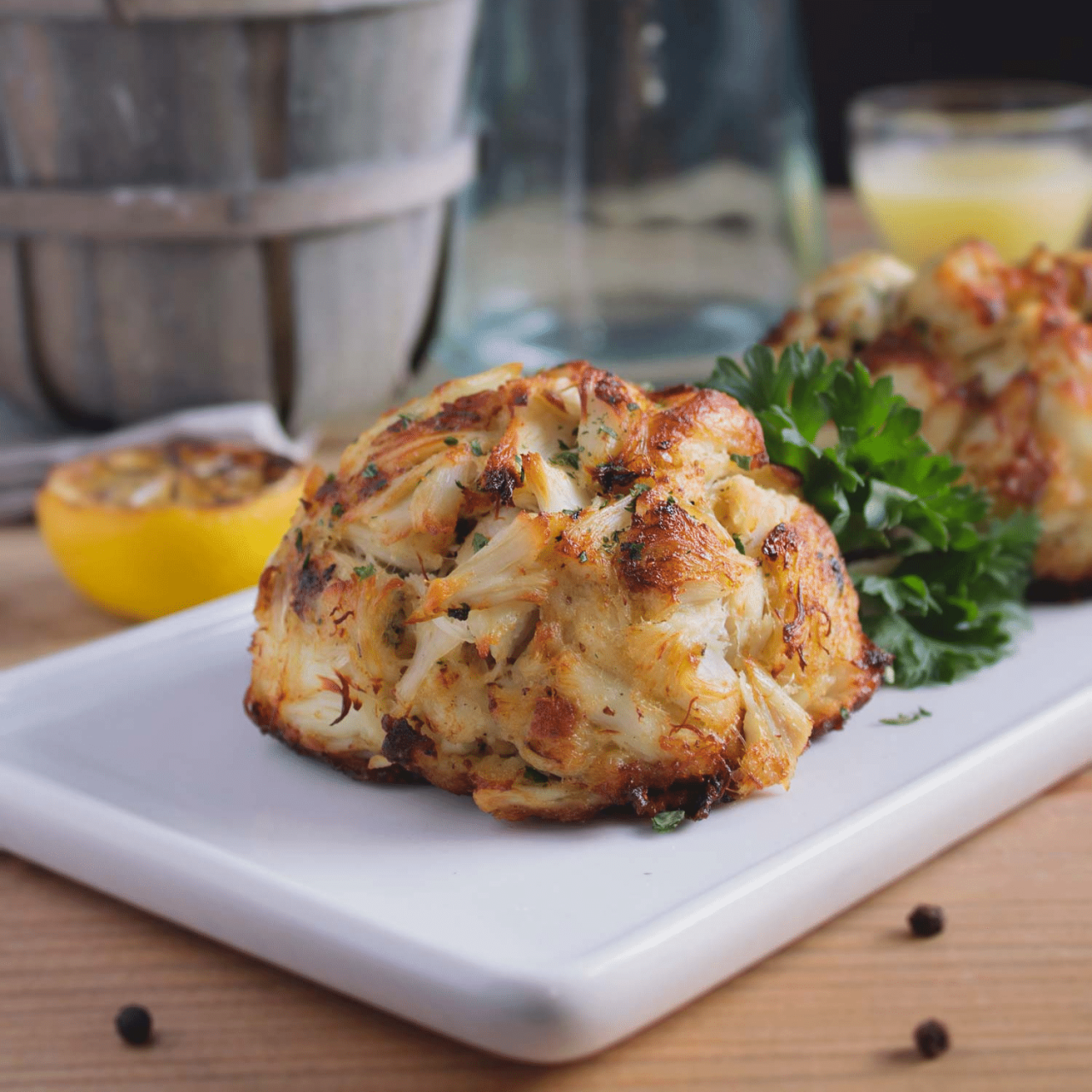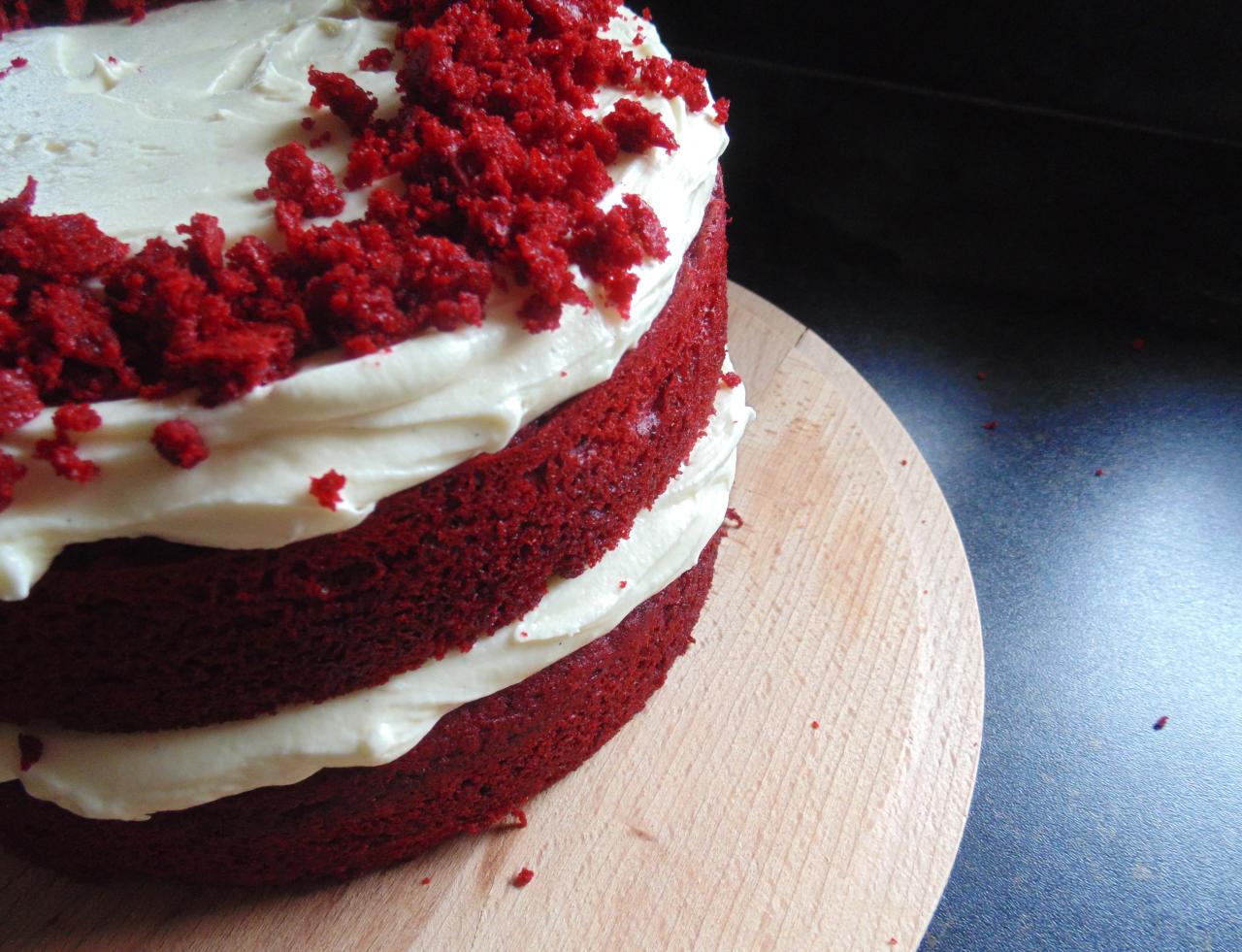Chocolate cake recipe – a phrase that conjures images of rich, decadent layers and sweet, creamy frosting. Whether you’re a seasoned baker or a novice in the kitchen, the allure of a perfectly baked chocolate cake is undeniable. From its humble beginnings to its modern-day variations, chocolate cake has captured hearts and palates across cultures for centuries.
This comprehensive guide delves into the world of chocolate cake, exploring its history, key ingredients, baking techniques, and countless ways to customize this beloved dessert. We’ll uncover the secrets to achieving a moist, flavorful cake that will impress even the most discerning taste buds.
Introduction to Chocolate Cake
Chocolate cake, a beloved dessert enjoyed worldwide, has a rich history and diverse variations. From its humble beginnings to its modern-day incarnations, chocolate cake has captivated taste buds and delighted celebrations for centuries.
History and Origin
The origins of chocolate cake can be traced back to the ancient Aztecs, who cultivated cacao beans and used them to create a bitter beverage. The arrival of cacao beans in Europe in the 16th century marked the beginning of chocolate’s journey as a culinary ingredient.
Early chocolate cakes were dense and bitter, due to the limited processing techniques available at the time. The invention of the Dutch process in the 19th century, which alkalized cocoa beans, led to milder and more palatable chocolate cakes.
Types of Chocolate Cakes
The world of chocolate cake is vast and diverse, offering a range of textures, flavors, and appearances. Some popular types of chocolate cakes include:
- Classic Chocolate Cake:A basic chocolate cake with a moist and tender crumb, often frosted with buttercream or ganache.
- Devil’s Food Cake:A dark and intense chocolate cake with a rich, almost fudge-like texture.
- Chocolate Chip Cake:A light and fluffy cake studded with chocolate chips, providing a delightful combination of textures.
- Chocolate Bundt Cake:A rich and decadent cake baked in a bundt pan, creating an intricate swirl pattern.
- Chocolate Lava Cake:A decadent dessert with a molten chocolate center, often served warm.
Key Ingredients
The key ingredients in chocolate cake contribute to its unique texture and flavor. These include:
- Cocoa Powder:Provides the chocolate flavor and color. The type of cocoa powder used, such as natural or Dutch-processed, can influence the cake’s flavor and intensity.
- Sugar:Sweetens the cake and helps to tenderize the crumb.
- Butter:Adds richness and moisture to the cake.
- Eggs:Bind the ingredients together and contribute to the cake’s structure and texture.
- Flour:Provides the cake’s structure and prevents it from being too dense.
- Baking Soda or Baking Powder:Acts as a leavening agent, creating air pockets that make the cake light and airy.
Classic Chocolate Cake Recipe
This classic chocolate cake recipe is a timeless favorite, offering a moist and flavorful base for endless variations. It’s perfect for a special occasion or a simple weeknight treat.
Ingredients
- 1 1/2 cups all-purpose flour
- 3/4 cup unsweetened cocoa powder
- 1 1/2 cups granulated sugar
- 1 1/2 teaspoons baking powder
- 1/2 teaspoon baking soda
- 1/2 teaspoon salt
- 1 cup buttermilk
- 1/2 cup vegetable oil
- 2 large eggs
- 1 teaspoon vanilla extract
Equipment
- 2 9-inch round cake pans
- Mixing bowls
- Measuring cups and spoons
- Whisk
- Electric mixer
- Spatula
- Parchment paper
- Oven
Instructions
- Preheat oven to 350°F (175°C). Grease and flour two 9-inch round cake pans.
- In a large bowl, whisk together the flour, cocoa powder, sugar, baking powder, baking soda, and salt.
- In a separate bowl, whisk together the buttermilk, oil, eggs, and vanilla extract.
- Gradually add the wet ingredients to the dry ingredients, mixing on low speed until just combined. Do not overmix.
- Divide the batter evenly between the prepared cake pans.
- Bake for 30-35 minutes, or until a toothpick inserted into the center comes out clean.
- Let the cakes cool in the pans for 10 minutes before inverting them onto a wire rack to cool completely.
Tips for a Moist and Flavorful Cake
- Use good quality cocoa powder:Opt for a high-quality unsweetened cocoa powder for the best flavor.
- Don’t overmix:Overmixing can develop the gluten in the flour, resulting in a tough cake. Mix until just combined.
- Use buttermilk:Buttermilk adds moisture and tanginess to the cake.
- Don’t overbake:Overbaking can lead to a dry cake. Test for doneness with a toothpick, which should come out clean.
- Let the cake cool completely:Cooling the cake allows it to firm up and prevents it from crumbling when frosted.
Variations and Flavor Enhancements
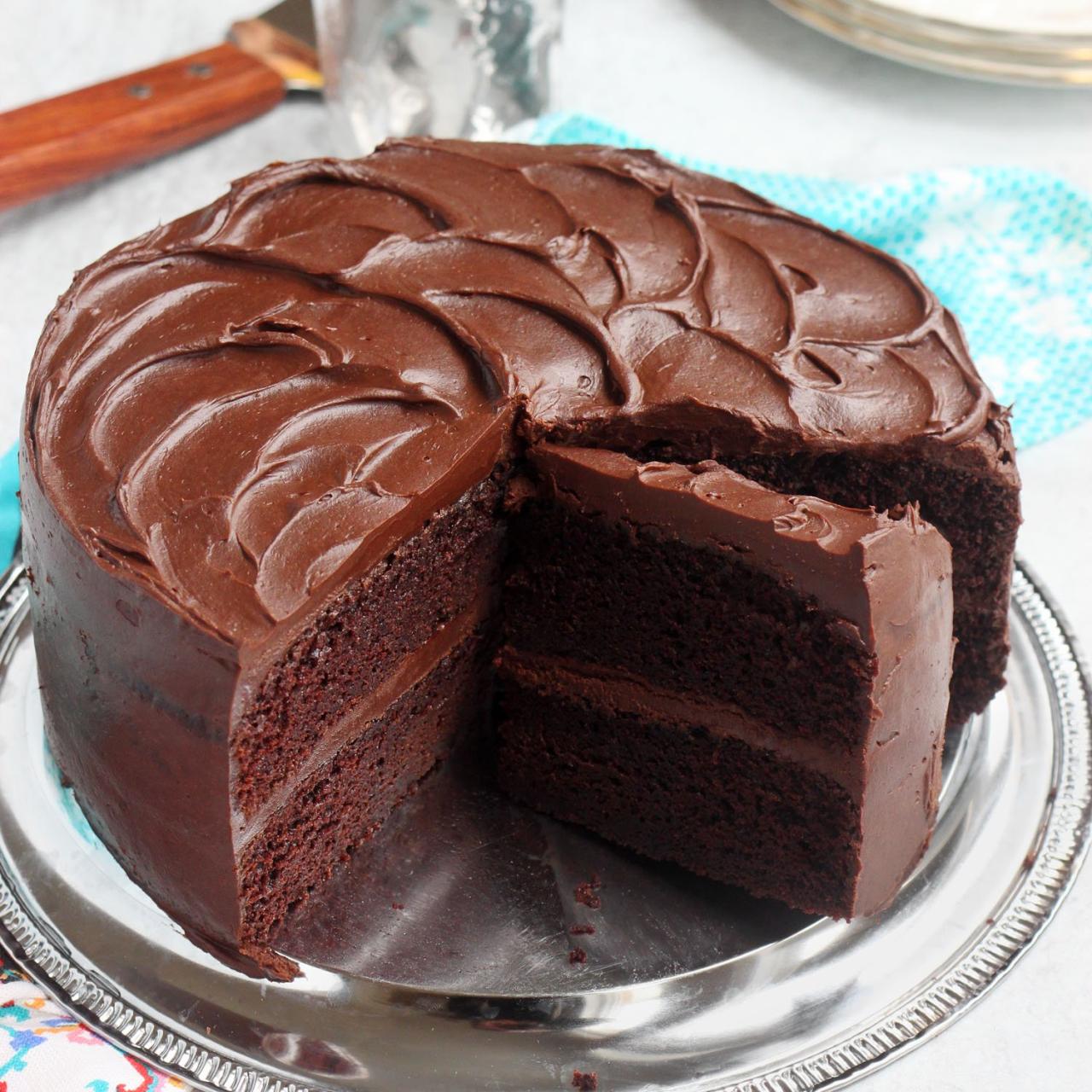
The classic chocolate cake recipe is a blank canvas for culinary creativity. Experiment with different ingredients and techniques to create unique and delicious variations.
Common Variations
Adding nuts, fruits, or spices can enhance the flavor and texture of chocolate cake.
- Nuts:Chopped walnuts, pecans, or almonds add a nutty crunch and complement the chocolate flavor.
- Fruits:Fresh or dried berries, cherries, or chocolate chips add sweetness and a burst of flavor.
- Spices:A pinch of cinnamon, nutmeg, or espresso powder can enhance the chocolate flavor.
Frosting Options
Chocolate cake is often adorned with a variety of frostings, each offering a distinct flavor and texture.
- Ganache:A rich and decadent frosting made from chocolate and cream, often used for a smooth and glossy finish.
- Buttercream:A light and fluffy frosting made from butter, sugar, and milk or cream, perfect for a classic and elegant look.
- Cream Cheese Frosting:A tangy and creamy frosting made from cream cheese, butter, and powdered sugar, ideal for a lighter and less sweet option.
Chocolate Cake Variations

Here is a table comparing different chocolate cake variations and their key characteristics:
| Variation | Key Characteristics |
|---|---|
| Classic Chocolate Cake | Moist, tender crumb, versatile for frostings and fillings. |
| Devil’s Food Cake | Dark, intense chocolate flavor, rich and fudge-like texture. |
| Chocolate Chip Cake | Light and fluffy, studded with chocolate chips for a delightful texture contrast. |
| Chocolate Bundt Cake | Rich and decadent, baked in a bundt pan for an intricate swirl pattern. |
| Chocolate Lava Cake | Molten chocolate center, served warm for a decadent and indulgent treat. |
Baking Techniques and Tips: Chocolate Cake Recipe
Mastering the art of baking chocolate cake requires attention to detail and understanding the importance of key techniques.
Measuring Ingredients
Accurate measuring is crucial for achieving the desired consistency and texture in chocolate cake.
- Dry Ingredients:Use a spoon to scoop dry ingredients into a measuring cup, then level off the top with a straight edge.
- Wet Ingredients:Use a liquid measuring cup and place it on a flat surface to ensure accuracy.
Preheating the Oven, Chocolate cake recipe
Preheating the oven allows the cake to bake evenly and prevents it from sinking in the center.
- Allow sufficient time:Preheat the oven to the desired temperature for at least 15 minutes before placing the cake pans inside.
Baking Pan Size
The size of the baking pan affects the baking time and the cake’s height.
- Use the correct size:The recipe will specify the recommended pan size. Using a pan that is too small or too large can result in uneven baking or a cake that is too dense or too flat.
Common Baking Mistakes
- Overmixing:Overmixing can develop the gluten in the flour, resulting in a tough cake. Mix until just combined.
- Overbaking:Overbaking can lead to a dry cake. Test for doneness with a toothpick, which should come out clean.
- Not greasing and flouring the pans:This can cause the cake to stick to the pan and make it difficult to remove.
- Not letting the cake cool completely:Cooling the cake allows it to firm up and prevents it from crumbling when frosted.
Serving and Presentation
Chocolate cake is a dessert that deserves a beautiful and impressive presentation. With a little creativity, you can transform a simple cake into a stunning centerpiece.
Decorating and Presentation
- Frosting:A smooth and even frosting layer is essential for a polished look. Use a spatula to create a smooth finish.
- Sprinkles:Colorful sprinkles add a playful touch and can be used to create patterns or designs.
- Chocolate shavings:Thin shavings of chocolate create an elegant and decadent look.
- Fresh fruit:Sliced strawberries, raspberries, or blueberries add a touch of freshness and color.
- Whipped cream:A dollop of whipped cream adds a light and airy touch.
Serving Sizes and Beverages
Chocolate cake is typically served in individual slices, with the size depending on the occasion and preference. A slice of chocolate cake is often paired with a refreshing beverage, such as:
- Milk:A classic pairing that complements the chocolate flavor.
- Coffee:A rich and bold coffee enhances the chocolate’s depth of flavor.
- Tea:A cup of black tea or Earl Grey tea provides a contrast in flavor and a calming experience.
Visual Representation
Imagine a beautifully decorated chocolate cake, its layers stacked high and frosted with a smooth, glossy ganache. The sides are adorned with delicate chocolate shavings, while a scattering of fresh raspberries adds a pop of color. The cake sits proudly on a white cake stand, surrounded by a bouquet of fragrant lilies, creating a stunning centerpiece for any celebration.
Chocolate Cake History and Culture
Chocolate cake has a rich history and cultural significance, evolving over time and reflecting the tastes and traditions of different societies.
Historical Significance
Chocolate cake has played a significant role in celebrations and social gatherings throughout history. In the Victorian era, chocolate cake was a popular dessert served at tea parties and social events. In the 20th century, chocolate cake became a staple dessert in American households, often enjoyed at birthdays, weddings, and other special occasions.
Evolution of Recipes and Techniques
The evolution of chocolate cake recipes and baking techniques has been influenced by technological advancements, changing tastes, and cultural influences. Early chocolate cakes were dense and bitter, due to the limited processing techniques available at the time. The invention of the Dutch process in the 19th century, which alkalized cocoa beans, led to milder and more palatable chocolate cakes.
The development of electric mixers and other kitchen appliances in the 20th century made baking chocolate cake easier and more accessible.
Chocolate Cake Traditions
Chocolate cake traditions vary across different cultures, reflecting the unique ingredients and baking techniques of each region. In France, chocolate cake is often made with a high percentage of dark chocolate, creating a rich and intense flavor. In Germany, chocolate cake is often layered with buttercream and topped with a marzipan glaze.
In Mexico, chocolate cake is often infused with spices like cinnamon and chili powder, creating a unique and flavorful twist.
Concluding Remarks
As you embark on your chocolate cake journey, remember that baking is an art form. Don’t be afraid to experiment, explore different flavors, and let your creativity guide you. Whether you’re whipping up a classic chocolate cake for a special occasion or indulging in a simple treat for yourself, the joy of baking lies in the process and the delicious results.
So, grab your ingredients, preheat your oven, and let’s create a chocolate cake masterpiece together.

